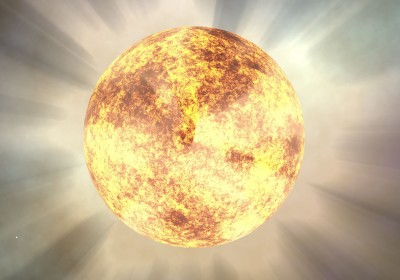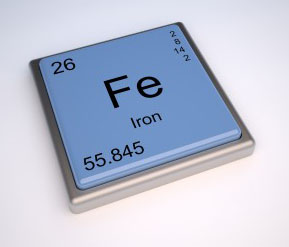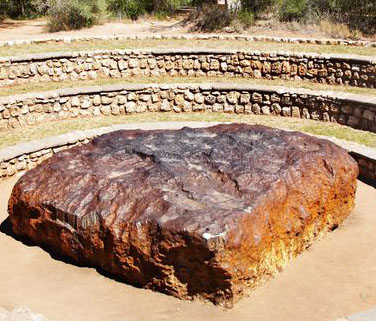Supernova

All of us are made of star stuff but it takes a special star to make iron. It takes a really big star. Much, much bigger than our Sun. The main source of energy in any star, our sun included, comes from the nuclear fusion of hydrogen into helium at the core. The radiation pressure from these reactions resists the enormous gravity of the outer shell preventing collapse. There is not an unlimited supply of hydrogen in the core however. At some point as fuel runs out the core cannot resist the pressure of the outer shell.
What happens next
Depends.
A star such as our sun will eventually grow into a Red Giant, convert the helium in the core to carbon, then nova or explode its outer shells into nebulae. The carbon in the core will glow white from the retained heat making a white dwarf that will eventual cool into a black dwarf about the size of the earth. Pretty tame stuff. Except for the fact if it were our sun it would obliterate all life on our planet.
Intractable Iron
A star with 5 times the mass of our sun or more has enough heat and pressure to fuse heavier and heavier elements. Helium into carbon, carbon into oxygen, oxygen into silicon and so on. Right up the periodic table until it smacks into element number 26-Fe or IRON.
Iron is a pretty selfish character. All the previous reactions have released energy. Iron sucks it up. Now the big guy is in trouble. Its size had only postponed the inevitable. Fortunately for us and the universe at large it became a heavy element factory during its struggle. The ensuing collapse and spectacular explosion (supernova) creates all the elements heavier than iron and sends them as well as iron and all the lighter elements out into the universe to be used to make new stuff-ourselves included. Iron is at the heart of us-literally. Hemoglobin in our red blood cells is the iron containing protein that carries all of our oxygen to all of our cells. No iron- no us. No supernovas-no us.
Visitors From Space

The picture at left is the Hoba meteorite in Namibia Africa. It is the largest know chunk of naturally occurring surface iron in the world. It weighs is at 70 or 80 tons-140,000 to 160,000 pounds.
It arrived around 80,000 years ago. Blown out of the core of some distant star. Hurtling across space for a rendezvous with earth. It is conjectured that it came in at a low angle skipping through the atmosphere like a flat stone on water slowing down so that it left no crater. A farmer in 1920 found it while plowing his field. It has never been moved. It is 160,000 pounds after all. Looks good where it is don’t you think?
Huge Resource
Iron is the most abundant element in the earths crust. It occurs almost exclusively in the form of iron oxides. Rust is a form of iron oxide. Iron has a tremendous affinity for oxygen. Early earths oceans were loaded with free iron. As soon as oxygen entered the picture the water and oxygen reacted with iron to form vast deposits of iron oxides. These deposits became rock and form the basis for the iron ores we mine today. Mainly magnetite and hematite.
Hematite’s chemical formula is Fe2O3. Magnetite is Fe2O4. In order to get usable iron. The oxygen has to be removed in a process called reduction. The rock it is bound up in it has to be removed as well. It is a complex chemical reaction that our ancestors figured out a few thousand years ago using simple technologies.
We will do the same.


















